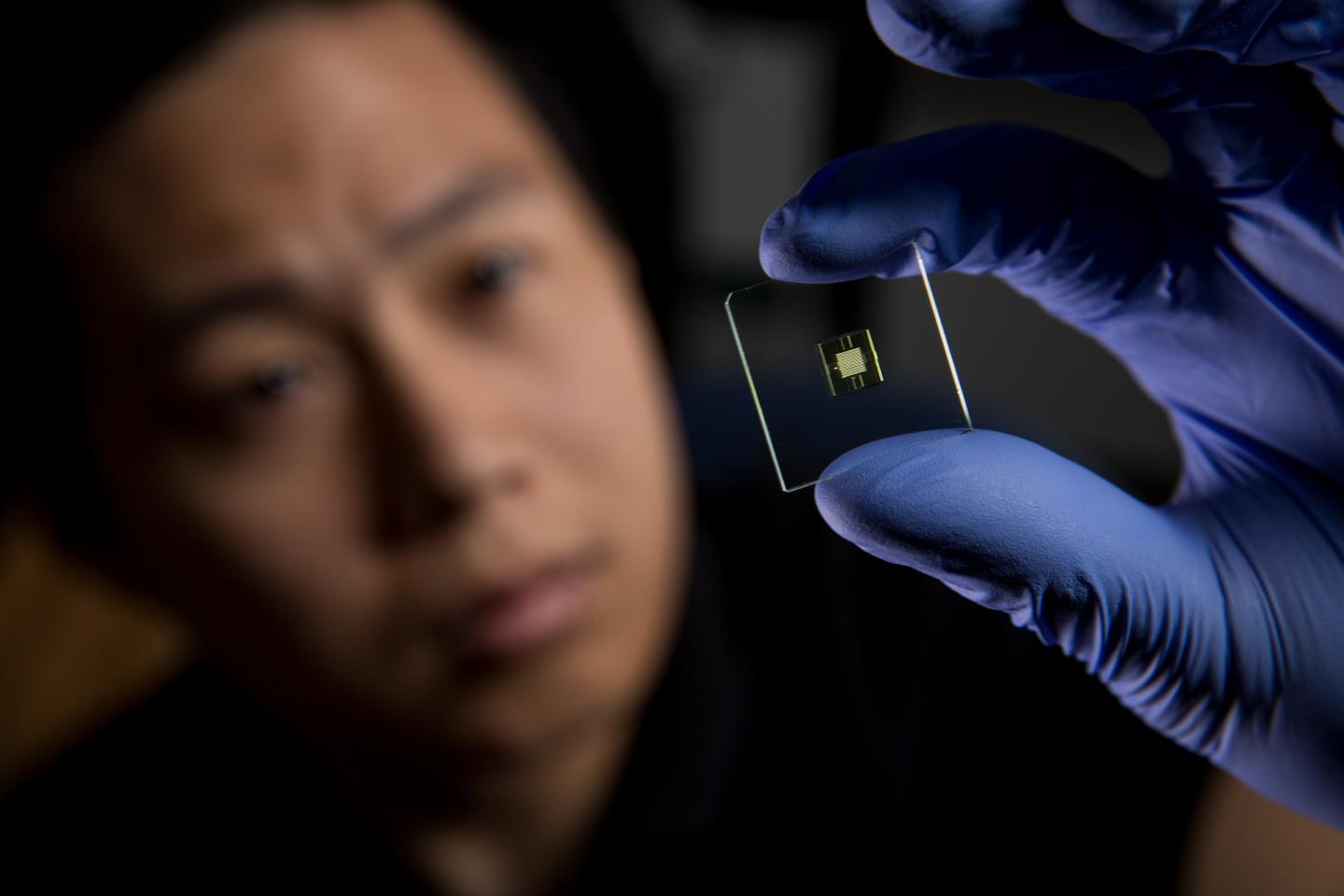Researchers in the engineering and chemistry departments of Brigham Young University in Utah claim that the 3D-printed device represents the first use of the technique to produce channels at a scale of much less than 100µm, narrow enough to produce the microfluidic flow effects needed for lab-on-a-chip operations. The team claims that its method is faster than current microfluidic manufacturing techniques, and also does not require cleanroom conditions.

Previous attempts at printing microfluidic devices have not been able to achieve channels narrow enough for surface tension to provide enough force to pull the fluid in the device through the channels. "So we decided to make our own 3D printer and research a resin that could do it," said electrical engineering professor Greg Nordin.
Working with chemistry professor Adam Woolley, Nordin built a 3D printer that works by a technique known as digital light processing stereolithography (DLP-SLA). This uses a micromirror array chip — a device used in most consumer projectors — to project a pattern for each layer of the printed object onto a light-sensitive resin. Most such printers contain an LED to project light at a wavelength of 405nm, but the BYU team instead used a 385nm LED, which dramatically increases the available selection of UV absorbers for resin formulation.
Undergraduate Bryce Bickham dug through 20 volumes of reference texts on the spectra of potential resin materials, before settling on 2-nitrophenyl phenyl sulphide (NPS) as the UV absorber. Graduate student Hua Gong then used this material to synthesise the printing resin. In a paper in the journal Lab on a Chip, the team explains a novel channel-narrowing technique that, combined with the choice of resin, allowed them to print channels with cross-sections as small as 20µm by 18µm — an improvement of a factor of 100 on the size of features that can be printed compared with other methods, according to Woolley.
The researchers say they are laying the foundation for 3D printing to challenge the dominance of conventional methods — soft lithography and hot embossing — of microfluidic prototyping and development. "We're deliberately trying to start a revolution in how microfluidic devices are fabricated," Nordin said. The team claims it takes about 30 minutes to fabricate a device.
"It's not just a little step; it's a huge leap from one size regime to a previously inaccessible size regime for 3D printing," Woolley said. "It opens up a lot of doors for making microfluidics more easily and inexpensively."
Woolley's research interests are focused around using biomarkers to predict premature births, and he and Nordin plan to use this technique to develop a microfluidic device to detect these substances in clinical samples.




AI-generated medical responses need monitoring, study finds
This would negate most of the benefit of using AI in the first place, rather like the Locomotive Act 1865 that required any self-propelled road...